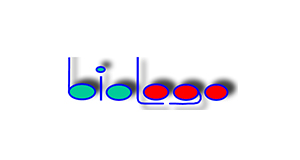Pan-Cytokeratin, 2 Clones (AE1/AE3)
Pan-Cytokeratin, 2 Clones (AE1/AE3), Monoclonal, IgG1, Clone: AE1/AE3
Artikelnummer
BILCK102
Verpackungseinheit
1 ml
Hersteller
BioLogo
Verfügbarkeit:
wird geladen...
Preis wird geladen...
Clone: AE1/AE3
Background: Pan-Cytokeratin (AE1/AE3) contains two different clones, which label the majority of normal epithelia and carcinoma. Cytokeratins are a group of water soluble filament proteins, which are components of the cytoskeleton of the epidermis and other epithelial cells. Gelelectrophoretic investigation revealed 20 different Cytokeratins, characterised by different molecular sizes and pI-values. They can be subdivided into basic and acid subfamilies. The nomenclature according to Moll et al. (1982) is most commonly used. Basic cytokeratins (52-67 kD) and acid cytokeratins (40, 48, 50, 50', 56,5 kD) CK 1-8, 10, 14-16 and 19 according to the nomenclature by Moll (1982) .
Positive Control: Appendix
Immunogen: Human epithelial keratins
Purification Method: Antibody solution in stabilizing phosphate buffer pH 7.3. Contains 0.09 % sodium azide**. The volume is sufficient for at least 200 immunohistochemical tests (100 µl working solution / test). Use appropriate antibody diluent e.g. BIOLOGO Art .No. PU002.
Concentration: 70 µg/ml
References: 1. Moll R., Franke W.W., Schiller D.L., Geiger B., and Krepler R. (1982) The Catalog of Human Cytokeratins: Patterns of Expression in Normal Epithelia, Tumors and Cultured Cells. Cell 31; 11 ff. 2. Sun T.-T. Tseng S.C.G., Huang A.J.W., Cooper D., Lynch M.H., Weiss R., Eichner R., and Schermer (1985) Monoclonal antibody studies of keratin expression: A review. In: Intermediate Filaments , Wang E. et al. eds. N.Y. Acad. Sci. 455, pp 307 ff.
Caution: *These antibodies are intended for in vitro research use only. They must not be used for clinical diagnostics and not for in vivo experiments in humans or animals. ** The preservative sodium azide is known to be poisonous and potentially hazardous to health. It should be handled only by trained staff. Despite of the product's low azide concentration it must be handled with care. Dispose according to regional rules!
Background: Pan-Cytokeratin (AE1/AE3) contains two different clones, which label the majority of normal epithelia and carcinoma. Cytokeratins are a group of water soluble filament proteins, which are components of the cytoskeleton of the epidermis and other epithelial cells. Gelelectrophoretic investigation revealed 20 different Cytokeratins, characterised by different molecular sizes and pI-values. They can be subdivided into basic and acid subfamilies. The nomenclature according to Moll et al. (1982) is most commonly used. Basic cytokeratins (52-67 kD) and acid cytokeratins (40, 48, 50, 50', 56,5 kD) CK 1-8, 10, 14-16 and 19 according to the nomenclature by Moll (1982) .
Positive Control: Appendix
Immunogen: Human epithelial keratins
Purification Method: Antibody solution in stabilizing phosphate buffer pH 7.3. Contains 0.09 % sodium azide**. The volume is sufficient for at least 200 immunohistochemical tests (100 µl working solution / test). Use appropriate antibody diluent e.g. BIOLOGO Art .No. PU002.
Concentration: 70 µg/ml
References: 1. Moll R., Franke W.W., Schiller D.L., Geiger B., and Krepler R. (1982) The Catalog of Human Cytokeratins: Patterns of Expression in Normal Epithelia, Tumors and Cultured Cells. Cell 31; 11 ff. 2. Sun T.-T. Tseng S.C.G., Huang A.J.W., Cooper D., Lynch M.H., Weiss R., Eichner R., and Schermer (1985) Monoclonal antibody studies of keratin expression: A review. In: Intermediate Filaments , Wang E. et al. eds. N.Y. Acad. Sci. 455, pp 307 ff.
Caution: *These antibodies are intended for in vitro research use only. They must not be used for clinical diagnostics and not for in vivo experiments in humans or animals. ** The preservative sodium azide is known to be poisonous and potentially hazardous to health. It should be handled only by trained staff. Despite of the product's low azide concentration it must be handled with care. Dispose according to regional rules!
| Artikelnummer | BILCK102 |
|---|---|
| Hersteller | BioLogo |
| Hersteller Artikelnummer | CK102 |
| Verpackungseinheit | 1 ml |
| Mengeneinheit | STK |
| Reaktivität | Human |
| Klonalität | Monoclonal |
| Methode | Immunohistochemistry (frozen), Immunohistochemistry (paraffin) |
| Isotyp | IgG1 |
| Wirt | Mouse |
| Produktinformation (PDF) | Download |
| MSDS (PDF) | Download |

 English
English







